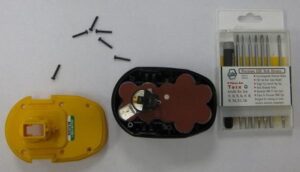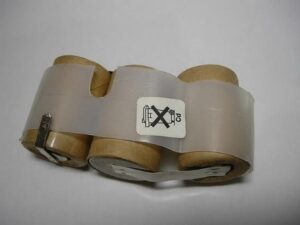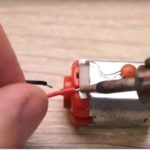Re-soldering batteries for a screwdriver: do it carefully and with your own hands
If the screwdriver quickly loses charge and is powered from the mains for a long time until the battery is fully restored, this clearly indicates the need to replace the power system. On the one hand, you can purchase a new device, but on the other hand, doing the repair yourself will be much cheaper. Resoldering batteries for a screwdriver is a simple procedure. The main stages with photos and comments are described in the article.
The content of the article
Battery types and symptoms of problems
Screwdrivers use different types of batteries, the classification depends on the composition:
- Lithium-cadmium – the most affordable, charge quickly, and have a large number of recharge cycles. But they can only be charged after the battery has been completely depleted.
- Nickel metal hydride have a higher cost. They provide a large number of recharges; when operating at high power, they constantly require recharging.
- Lithium-ion – also more expensive in price. They fill up fairly quickly with a charge, have no memory effect, and discharge very slowly when idle.
Repair of lithium screwdriver batteries and other types of batteries is required in cases where the following symptoms are observed:
- the device is leaking;
- impossible to remove;
- capacity has decreased significantly;
- no charge;
- The charge goes too quickly, and the device discharges just as quickly.
How to resolder a battery
It is quite possible to carry out repair work yourself. Along with a soldering iron and tin, you will need the following materials and tools:
- flux;
- Screwdriver Set;
- multimeter;
- insulating tape;
- new battery banks;
- side cutters (can be replaced with long-nose pliers).
To repair lithium batteries for a screwdriver with your own hands, proceed as follows:
- First you need to disassemble the body of the device. If it is connected with screws, they are simply unscrewed. But it also happens that both halves are glued together. Then you need to insert a sharp blade, for example, a screwdriver or a self-tapping screw, and wedge it in several places.

- Restoring lithium-ion screwdriver batteries is possible after the fault is determined. Therefore, it is necessary to run a multimeter to determine the damaged part. The check is carried out only after the battery is fully charged.
- All cells are removed from the device body and laid out so as to provide access to each contact. Take sequential measurements and record all readings.
- After completing the measurements, reassemble the battery and turn on the device so that the battery is completely discharged. After this, new measurements are taken and the readings are recorded again. If the voltage difference exceeds 0.5 V, the jar should definitely be replaced.

- It is better to use only new batteries for replacement. The condition of the old ones is not always known reliably, and besides, they will not be able to work long enough. When purchasing, you need to take into account that the new cells fully match both in size and voltage.
- To replace, first remove the faulty element. Moreover, the connecting plate is first cut off, which it is advisable to leave intact for installing a new can.
- Install a new battery, taking into account the poles.To ensure reliable fastening, it is recommended to wrap all elements with electrical tape. When soldering, it is important to act as quickly as possible so that the battery does not have time to overheat.

- This completes the DIY repair of the lithium-ion screwdriver battery. At the last stage, it is fully charged within a few hours. Then leave it alone for 24 hours until it cools completely. After this, it is recommended to check the voltage on each element again. All readings should be approximately the same (discrepancy up to 0.2 V is allowed).
- Then the tool is worked for a long time to completely use up the charge, after which it is charged. The cycle is repeated again, after which you can use the device for its intended purpose as usual. This will extend the battery life.
If we change the batteries in a screwdriver to Li-ion, we need to act quickly and carefully. To do this, prepare a multimeter and other tools and materials in advance, record all readings and resolder them as quickly as possible.





